Important Information On Using This Service
- Ergsy carefully checks the information in the videos we provide here.
- Videos shown by YouTube after a video has completed have NOT been reviewed by ERGSY.
- To view, click the arrow in the center of the video.
Using Subtitles and Closed Captions
- Most of the videos you find here will have subtitles and/or closed captions available.
- You may need to turn these on and choose your preferred language.
Turn Captions On or Off
- Go to the video you'd like to watch.
- If closed captions (CC) are available, settings will be visible on the bottom right of the video player.
- To turn on captions, click settings.
- To turn off captions, click settings again.
Find A Professional
More Items From Ergsy search
-
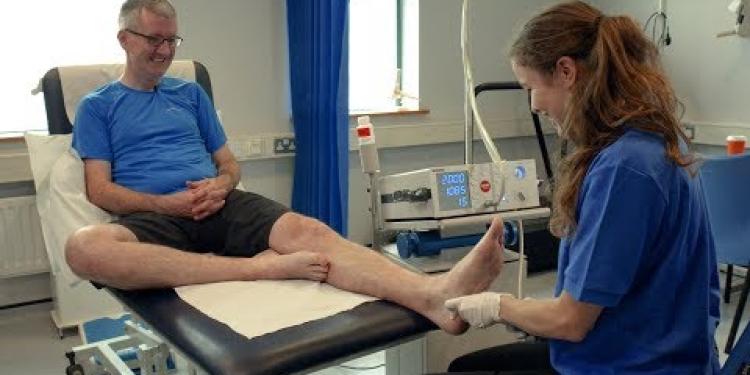
Plantar fasciitis
Relevance: 100%
-
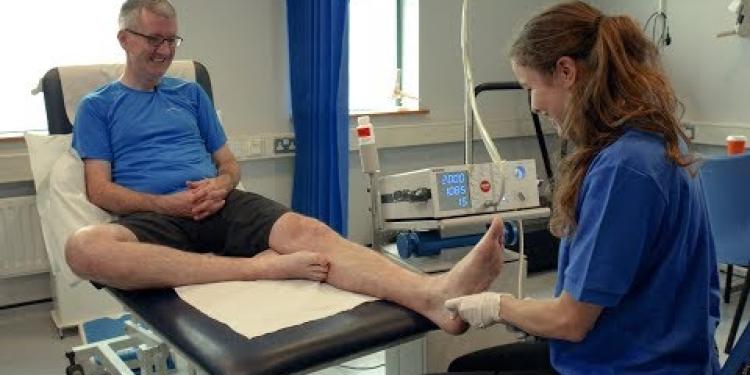
Plantar fasciitis
Relevance: 87%
-
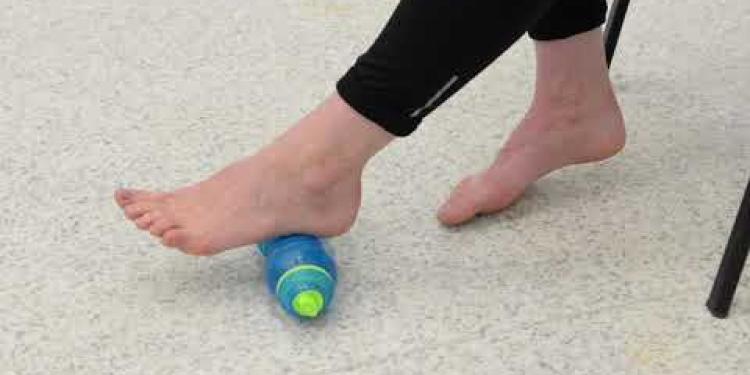
Plantar Fascia Cold Therapy
Relevance: 64%
-
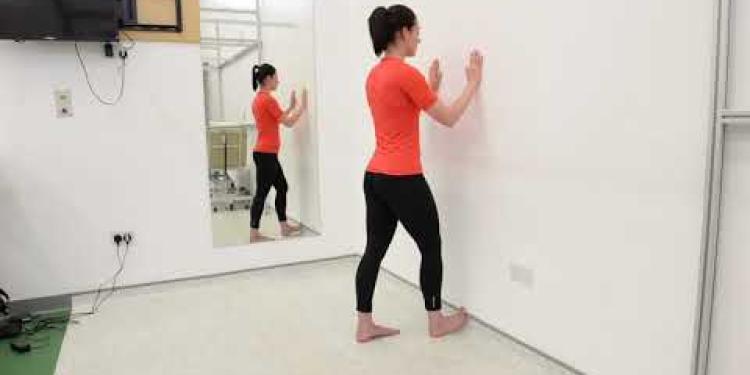
Plantar Fascia Wall Stretch
Relevance: 62%
-
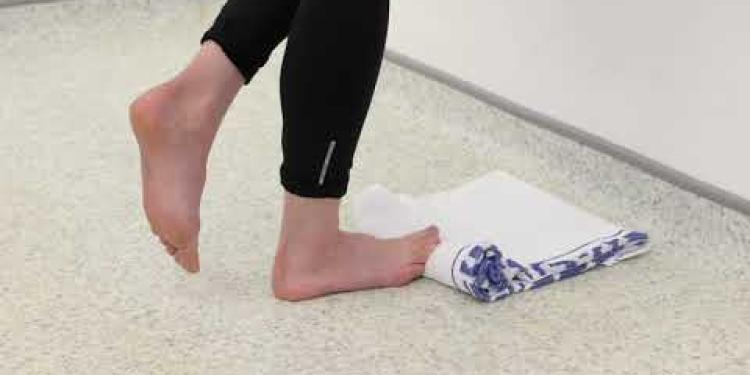
Plantar Fascia Loading Exercise (High Load Exercise)
Relevance: 58%
-
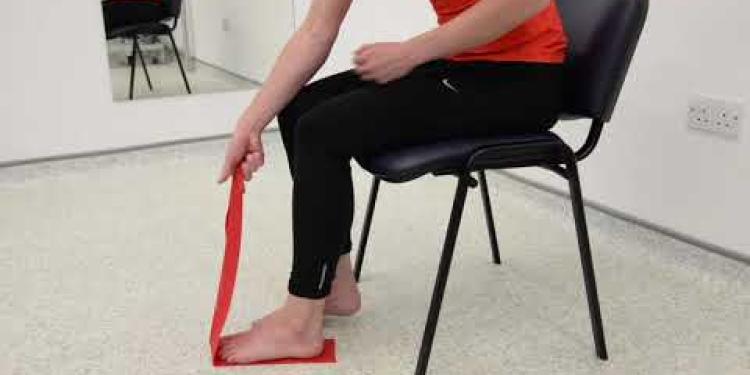
Plantar Fascia Intrinsic Theraband Strengthening Exercise
Relevance: 39%
-

Heel pain | NHS
Relevance: 18%
-
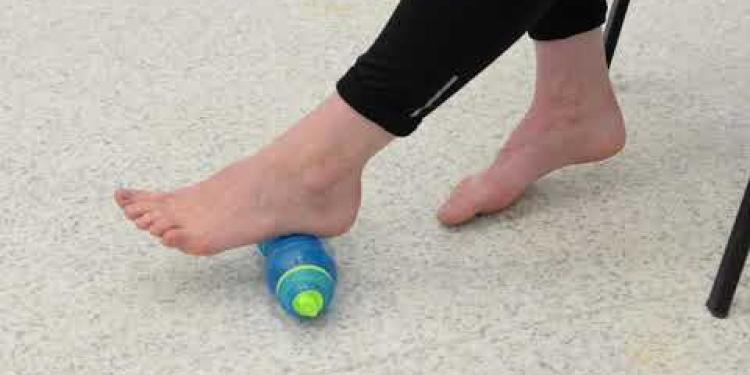
Foot Pain
Relevance: 12%
-
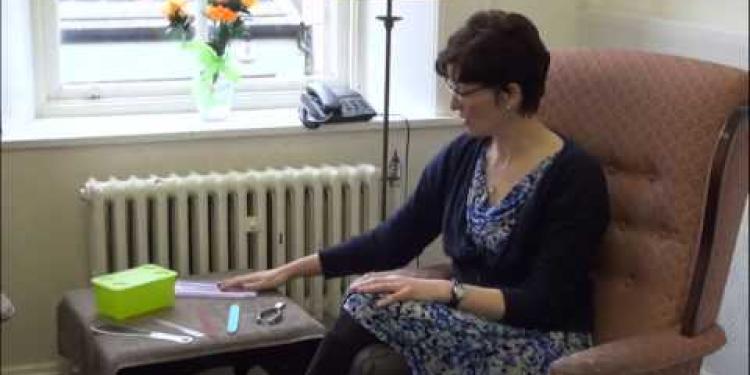
Podiatrist Personal Footcare
Relevance: 4%
-

Group A strep: North East GP tells you what you need to know
Relevance: 4%
-

NHS Looking after your feet - Podiatrist https://youtu.be/8J1v6K21ykc
Relevance: 4%
-
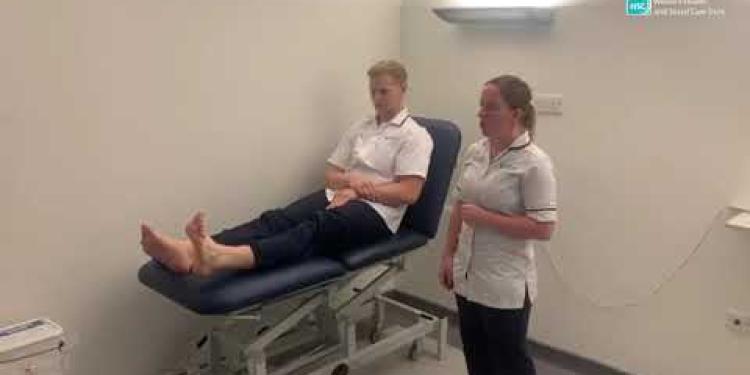
Physiotherapy Exercises following an Ankle Fracture
Relevance: 2%
-

Self care for your feet - Podiatrist
Relevance: 2%
Understanding Plantar Fasciitis
What is Plantar Fasciitis?
Plantar fasciitis is a common condition that affects the foot, particularly the heel, causing pain and inflammation of the plantar fascia. The plantar fascia is a thick band of tissue that runs across the bottom of your foot and connects your heel bone to your toes, playing an essential role in walking and overall mobility. Individuals in the United Kingdom experiencing consistent heel pain, particularly upon waking, may be suffering from plantar fasciitis.
Causes and Risk Factors
Plantar fasciitis can result from several factors including excessive strain on the plantar fascia due to activities such as long-distance running, ballet dancing, or aerobic dance. Other risk factors include obesity, which puts additional stress on the plantar fascia, and occupations that require long periods of standing or walking. Additionally, structural issues like flat feet or high arches can also contribute to the development of this condition.
Symptoms to Watch For
The hallmark symptom of plantar fasciitis is sharp, stabbing pain in the heel area, especially noticeable with your first steps in the morning. Some patients also experience pain after long periods of standing or after rising from sitting. The discomfort may diminish with movement but can return after prolonged activity or standing.
Diagnosis and Treatment Options
In the UK, if you suspect you have plantar fasciitis, it's advisable to consult with a General Practitioner (GP) or a specialist such as a podiatrist. They can diagnose the condition through a physical examination and, if needed, imaging tests like X-rays. Treatment for plantar fasciitis often begins with conservative measures such as rest, ice application, and stretching exercises. Over-the-counter pain relievers can also help manage the discomfort. In more severe cases, physical therapy, custom orthotics, or corticosteroid injections might be recommended.
Preventative Measures
Preventing plantar fasciitis involves managing risk factors and incorporating foot care into daily routines. Wearing supportive shoes with good arch support and cushioning can reduce stress on the plantar fascia. Maintaining a healthy weight, stretching before physical activities, and avoiding walking barefoot on hard surfaces can also help prevent the condition. For those in the UK who enjoy running or high-impact sports, switching to low-impact activities might lessen the risk.
Conclusion
Plantar fasciitis can significantly affect daily activities and quality of life. Understanding the causes, symptoms, and treatment options is crucial for managing and preventing this condition. If you experience persistent heel pain, consulting with a healthcare provider in the UK is essential for appropriate diagnosis and treatment.
Understanding Plantar Fasciitis
What is Plantar Fasciitis?
Plantar fasciitis is when your heel hurts. It happens because the bottom of your foot is sore. This part is called the plantar fascia. It is a thick tissue that connects the heel to your toes. It helps you walk. If your heel hurts a lot, especially in the morning, you might have plantar fasciitis.
Causes and Risk Factors
Plantar fasciitis can happen for many reasons. It can happen if you run a lot, dance ballet, or do lots of jumping exercises. Being overweight can also make it happen because it puts pressure on your feet. Jobs where you stand or walk a lot can also cause it. If you have flat feet or very high arches, you might get plantar fasciitis.
Symptoms to Watch For
If you have plantar fasciitis, your heel might hurt a lot, especially in the morning. It can feel like a sharp pain. Standing up for a long time can make your foot hurt too. The pain might go away when you move but can come back if you stand or walk for too long.
Diagnosis and Treatment Options
If you think you have plantar fasciitis, go to a doctor in the UK, like a GP or podiatrist. They can look at your foot and might do an X-ray. To feel better, rest your foot, put ice on it, and do stretching exercises. You can take pain medicine from the shop. If it’s very bad, you might need physical therapy or special shoe inserts.
Preventative Measures
You can stop plantar fasciitis from happening by taking care of your feet. Wear shoes that support your feet well. Keep a healthy weight. Stretch before you exercise and try not to walk barefoot on hard floors. If you like running or jumping, try activities that are softer on your feet.
Conclusion
Plantar fasciitis can make moving hard. Knowing what causes it and how to treat it is important. If your heel hurts a lot, visit a healthcare provider in the UK to find out what’s wrong and how to fix it.
Frequently Asked Questions
What is plantar fasciitis?
Plantar fasciitis is a condition that causes pain in the heel and bottom of the foot due to inflammation of the plantar fascia, a thick band of tissue that runs across the bottom of your foot and connects your heel bone to your toes.
What are the common symptoms of plantar fasciitis?
Common symptoms include sharp pain in the heel, especially with the first steps in the morning or after long periods of rest, and stiffness and tenderness in the bottom of the foot.
What causes plantar fasciitis?
Plantar fasciitis is often caused by repetitive strain injury to the plantar fascia. This can be due to excessive running or walking, insufficient foot arch support, obesity, or unsuitable footgear.
Who is at risk of developing plantar fasciitis?
Risk factors include being middle-aged, having flat feet, having a high arch, obesity, long-distance running, and occupations that require long periods of standing or walking on hard surfaces.
How is plantar fasciitis diagnosed?
Diagnosis is typically based on medical history and a physical exam. Your doctor may press on the foot to locate the source of pain and assess flexibility and stance. Imaging tests like X-rays or MRIs are sometimes used to rule out other conditions.
What are the treatment options for plantar fasciitis?
Treatment options include rest, ice applications, stretching exercises, over-the-counter pain relievers, orthotics, physical therapy, and in severe cases, corticosteroid injections or surgery.
Can I continue exercising with plantar fasciitis?
While you should avoid high-impact activities like running, low-impact exercises such as swimming or cycling can be continued to maintain fitness without worsening the condition.
Are there any home remedies for plantar fasciitis?
Home remedies include applying ice to the affected area, performing stretching exercises, using over-the-counter pain relief medication, and wearing supportive shoes with good arch support.
How long does it take to recover from plantar fasciitis?
Recovery time varies, with many people experiencing improvement within a few months with appropriate treatment and lifestyle modifications. Chronic cases may take up to a year or longer to fully resolve.
Is plantar fasciitis preventable?
You can help prevent plantar fasciitis by wearing properly fitting shoes with good arch support, maintaining a healthy weight, avoiding excessive running on hard surfaces, and regularly stretching your feet and calves.
Do orthotics help with plantar fasciitis?
Yes, orthotic devices such as custom-made or over-the-counter shoe inserts can help provide support and reduce the strain on the plantar fascia, which can alleviate symptoms.
Can losing weight help with plantar fasciitis?
Yes, losing weight can help reduce the strain and pressure on the plantar fascia, improving symptoms and aiding in recovery.
Can plantar fasciitis return after treatment?
Yes, plantar fasciitis can recur, especially if the underlying causes such as poor footwear, obesity, or high-impact activities are not addressed.
When should I see a doctor for plantar fasciitis?
You should see a doctor if the pain persists for more than a few weeks, is severe, or is affecting your daily activities. Professional evaluation can help develop an effective treatment plan.
What types of doctors treat plantar fasciitis?
Plantar fasciitis can be treated by general practitioners, podiatrists (foot specialists), orthopaedic surgeons, and physical therapists.
What is plantar fasciitis?
Plantar fasciitis is when your foot hurts. It happens because a thick band on the bottom of your foot gets swollen.
Tools to help:
- Try wearing soft shoes.
- Put ice on your foot.
- Rest your foot.
- Ask a grown-up to help you stretch your foot.
Plantar fasciitis is when your heel and the bottom of your foot hurt. This happens because the plantar fascia, a thick tissue in your foot, becomes swollen. This tissue goes from your heel to your toes.
If you have trouble reading, there are things that can help. You can use audiobooks to listen to the text. Text-to-speech tools can read words out loud for you. Easy-to-read apps and programs can also make reading easier.
What are the common signs of plantar fasciitis?
Plantar fasciitis is when your foot hurts underneath. Here are some signs:
- Hurts under your heel or bottom of your foot.
- Pain is worse in the morning or after sitting.
- Feels better when you move around.
If your foot hurts, tell an adult or see a doctor.
Use pictures or videos to help you understand better.
Here are some common symptoms:
- You might feel a strong pain in your heel. This can happen when you take your first steps in the morning.
- You might also feel pain after sitting or lying down for a long time.
- Your foot might feel stiff and sore, especially at the bottom.
Using a soft cushion or rolling a ball under your foot can help. Stretching exercises might also make it feel better.
Why does my foot hurt from plantar fasciitis?
Plantar fasciitis happens when the thick band of tissue on the bottom of your foot gets hurt or sore.
Your feet might hurt because of:
- Running or walking too much
- Standing for a long time
- Wearing old or bad shoes
- Having feet that are flat or very arched
It can help to:
- Wear shoes with good support
- Rest your feet when they hurt
- Stretch your feet and legs
- Use ice to cool the sore spot
Plantar fasciitis is a problem with your foot. It happens when you hurt the tissue that runs along the bottom of your foot again and again. You can get it from running or walking too much, not having the right support for your foot arches, being overweight, or wearing the wrong shoes.
Who can get plantar fasciitis?
People who might have this problem often:
- Are in their middle ages (like your parents).
- Have flat feet (feet that do not arch up).
- Have very high arches in their feet.
- Are very overweight.
- Run very long distances.
- Have jobs where they stand or walk on hard floors a lot.
Some helpful tools to support them may include:
- Comfortable shoes with good support.
- Taking regular breaks to sit down.
- Talking to a doctor for advice.
How Do Doctors Know if You Have Plantar Fasciitis?
The doctor looks at your medical history and checks your body. The doctor might press on your foot to find where it hurts. They also see how well you can move and stand. Sometimes, they will take pictures of your foot, like X-rays or MRIs, to check for other problems.
How can we help with plantar fasciitis?
Plantar fasciitis can make your foot hurt a lot. Here are some ways to feel better:
- Rest: Take breaks and don't stand or walk too much.
- Ice: Put ice on your foot for a short time to feel better.
- Stretching: Do gentle stretches to help your foot.
- Shoes: Wear shoes with good support.
- Medicine: Sometimes, doctors give medicine to help with pain.
- Physical Therapy: Therapists can help you move better.
Try these ways to help your foot feel better. Always talk to a doctor or a grown-up if you need more help.
You can try different ways to feel better. Here are some ideas:
- Rest: Give your body a break.
- Ice: Put ice on the sore spot.
- Stretching: Do gentle exercises.
- Pain Relievers: You can get medicine from the shop to stop pain.
- Orthotics: Use special shoe inserts to help your feet.
- Physical Therapy: See a therapist who can help with movements.
- Corticosteroid Injections: A doctor might give a special shot if it's really bad.
- Surgery: Sometimes, doctors need to do an operation if nothing else works.
Ask an adult to help you decide what to try. They can also help find more information online.
Can I still do exercise if I have plantar fasciitis?
Do you have plantar fasciitis? This is a foot pain that can hurt when you walk or run. You might wonder if you can still exercise.
Here are some helpful tips:
- Talk to a doctor: They can tell you what exercises are safe for you.
- Choose gentle activities: Try swimming or cycling. These are easier on your feet.
- Stretch your feet: Do simple foot stretches to help with pain.
- Use good shoes: Wear comfy shoes with good support.
- Take breaks: Rest when your foot hurts.
You can also use tools to help you:
- Pain relief cream: Rub this on your foot to feel better.
- Orthotic insoles: Put these in your shoes for extra comfort.
Remember, it's important to listen to your body and rest if you feel pain.
Don't do exercises like running because they are hard on your body. But you can still do exercises that are gentle, like swimming or cycling. These are good for staying fit without making things worse.
Can I try home treatments for foot pain?
Yes, there are ways to help your foot feel better at home. Here are some things you can try:
- Rest your foot.
- Put ice on your foot for 15 minutes.
- Stretch your foot gently.
- Wear shoes with good support.
If your foot still hurts, talk to an adult or a doctor for more help.
Here are some simple ways to feel better:
1. Put ice on the sore spot.
2. Do some gentle stretches.
3. Take medicine you can buy at the store to help with pain.
4. Wear comfortable shoes that support your feet well.
How long does it take to get better from plantar fasciitis?
Plantar fasciitis is when your foot feels sore, especially in the heel. It can take a while to get better.
Most people start to feel better in a few months. Some might take longer, like 6 months or more.
To help your foot heal, you can:
- Rest your foot and avoid running or jumping.
- Use ice packs on your foot for 15 minutes a few times a day.
- Wear comfortable shoes with good support.
- Try stretching exercises for your foot.
- Ask a doctor or physiotherapist for more help.
How long it takes to get better is different for everyone. Some people feel better in a few months if they get the right help and make changes in their lives. Some people take a year or more to feel better. Everyone is different!
Can you stop plantar fasciitis from happening?
You can stop your feet from hurting by doing a few things. Wear shoes that fit well and have good support for your feet. Try to keep your body healthy by not gaining too much weight. Don't run too much on hard ground because it can hurt your feet. Also, remember to stretch your feet and calves often.
Do special shoe inserts help with foot pain?
Plantar fasciitis is when your foot hurts a lot, especially near the heel. Special shoe inserts, called orthotics, might help your foot feel better.
Here is how they can help:
- Give your foot support.
- Make walking more comfortable.
- Help your foot heal.
You can try these things to help, too:
- Rest your foot when it hurts.
- Wear shoes that fit well.
- Stretch your foot gently.
Ask a doctor or a foot specialist for more advice. They can help you find the best way to feel better.
Yes, special shoe inserts can help. They give support to your feet and make them feel better. You can buy them in a store, or a doctor can make them just for you.
Can losing weight help with heel pain?
If you have heel pain, losing weight might help.
When you are lighter, there is less pressure on your feet.
Less pressure can make your feet hurt less.
You can ask a doctor for advice.
They might suggest some exercises or ways to eat healthily.
Yes, losing weight can help your feet feel better. When you weigh less, it takes some of the pressure off your feet. This can make your feet hurt less and help them get better.
Can foot pain come back after you get better?
Yes, foot pain can come back. But don't worry! You can do things to help. Wear good shoes, stretch your feet, and rest when you need to. Ask a doctor if you feel pain again. They can help you feel better.
Yes, plantar fasciitis can come back. It might return if you don't fix things like wearing the wrong shoes, being overweight, or doing activities that are hard on your feet.
When do I need to see a doctor for foot pain?
If your foot hurts under your heel, it might be plantar fasciitis. Here is when you should see a doctor:
- Your foot still hurts after trying to rest it.
- The pain is very bad or gets worse.
- It is hard to walk because of the pain.
- Your foot feels swollen or hot.
Here are some things that can help with foot pain:
- Wear shoes with good support.
- Rest your foot by not standing for too long.
- Put ice on the sore spot.
- Try special foot exercises. You can ask an adult to help with these exercises.
See a doctor if the pain does not go away after a few weeks, if it hurts a lot, or if it stops you from doing things every day. The doctor can help you find a way to feel better.
What kinds of doctors can help with heel pain?
If your heel hurts because of plantar fasciitis, these people can help you feel better: regular doctors, foot doctors, special bone doctors, and people who help with exercises.
Useful Links
Useful links from: Plantar Fascia Intrinsic Theraband Strengthening Exercise
- NHS - Foot exercises This page provides general exercises for maintaining foot health, including exercises that may benefit the plantar fascia.
- Versus Arthritis - Foot and ankle exercises A detailed PDF guide from Versus Arthritis, offering various exercises for foot and ankle strengthening, suitable for conditions like plantar fasciitis.
- NHS - Heel pain This page focuses on causes and treatments for heel pain, including plantar fasciitis, and discusses exercises that can help relieve symptoms.
- NHS Inform - Footcare Offers guidance on maintaining healthy feet and includes general advice and exercises that can be useful for conditions such as plantar fasciitis.
Have you found an error, or do you have a link or some information you would like to share? Please let us know using the form below.
- Ergsy carfully checks the information in the videos we provide here.
- Videos shown by Youtube after a video has completed, have NOT been reviewed by ERGSY.
- To view, click the arrow in centre of video.
- Most of the videos you find here will have subtitles and/or closed captions available.
- You may need to turn these on, and choose your preferred language.
- Go to the video you'd like to watch.
- If closed captions (CC) are available, settings will be visible on the bottom right of the video player.
- To turn on Captions, click settings .
- To turn off Captions, click settings again.
